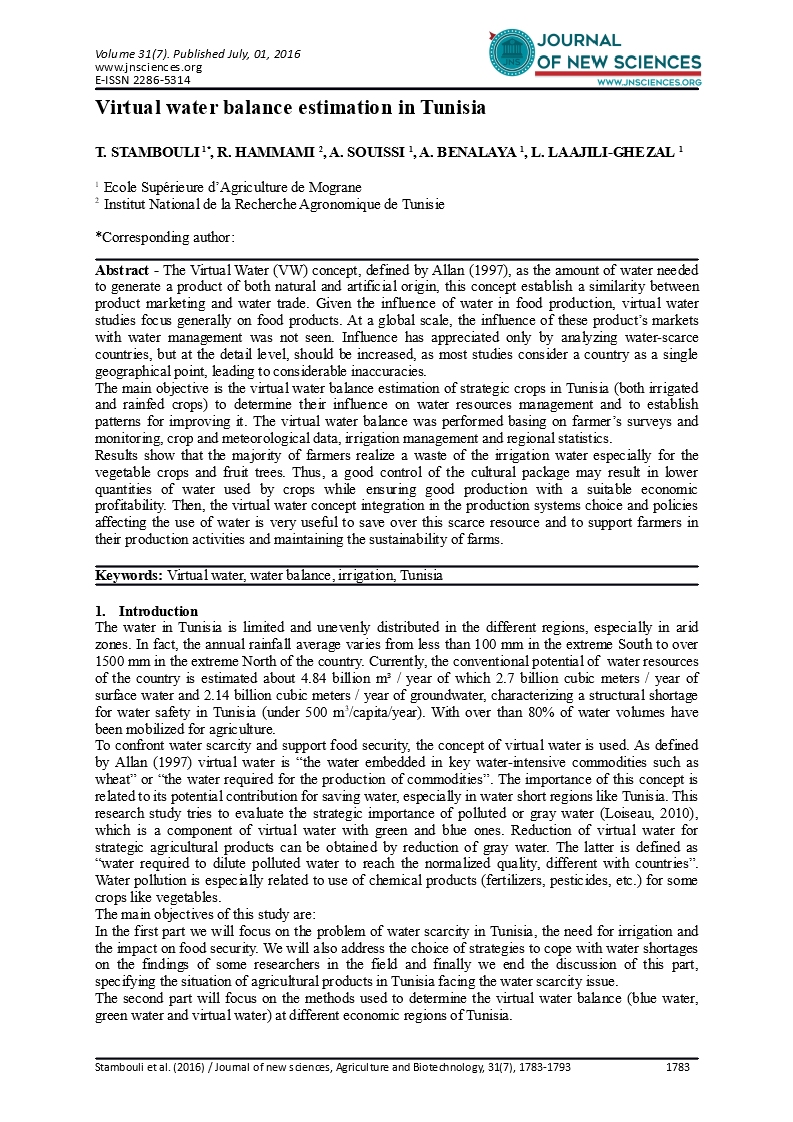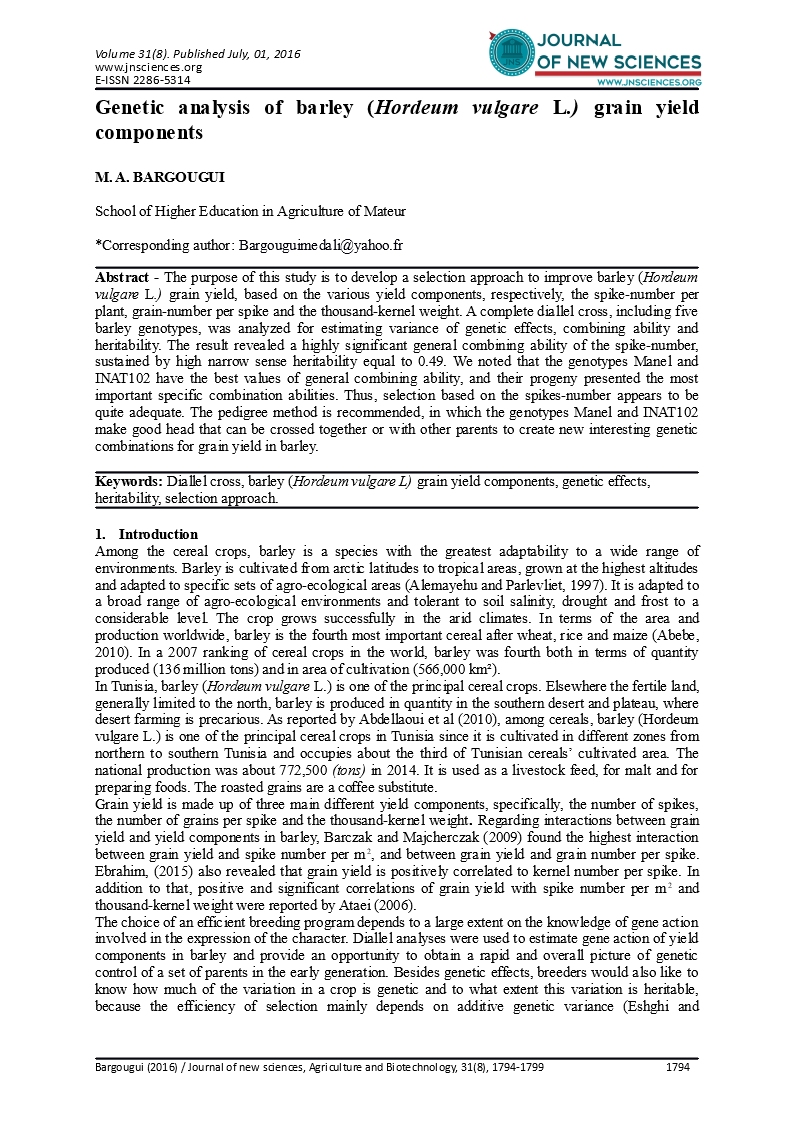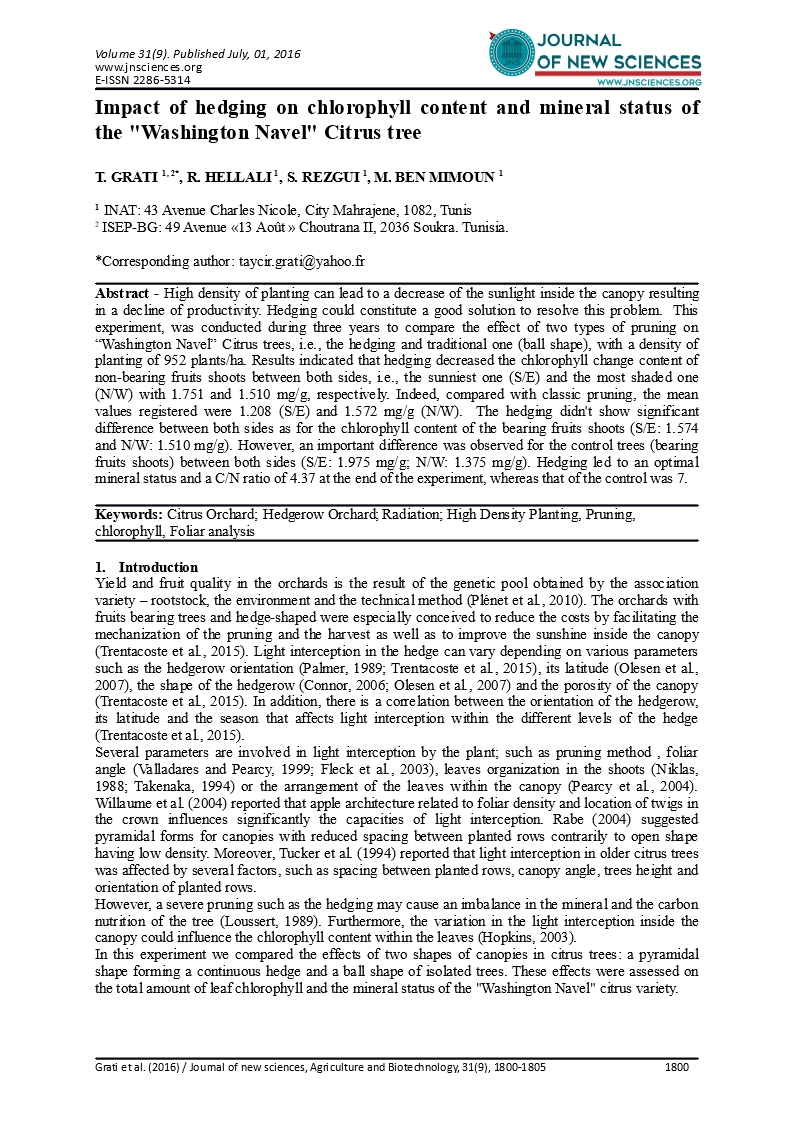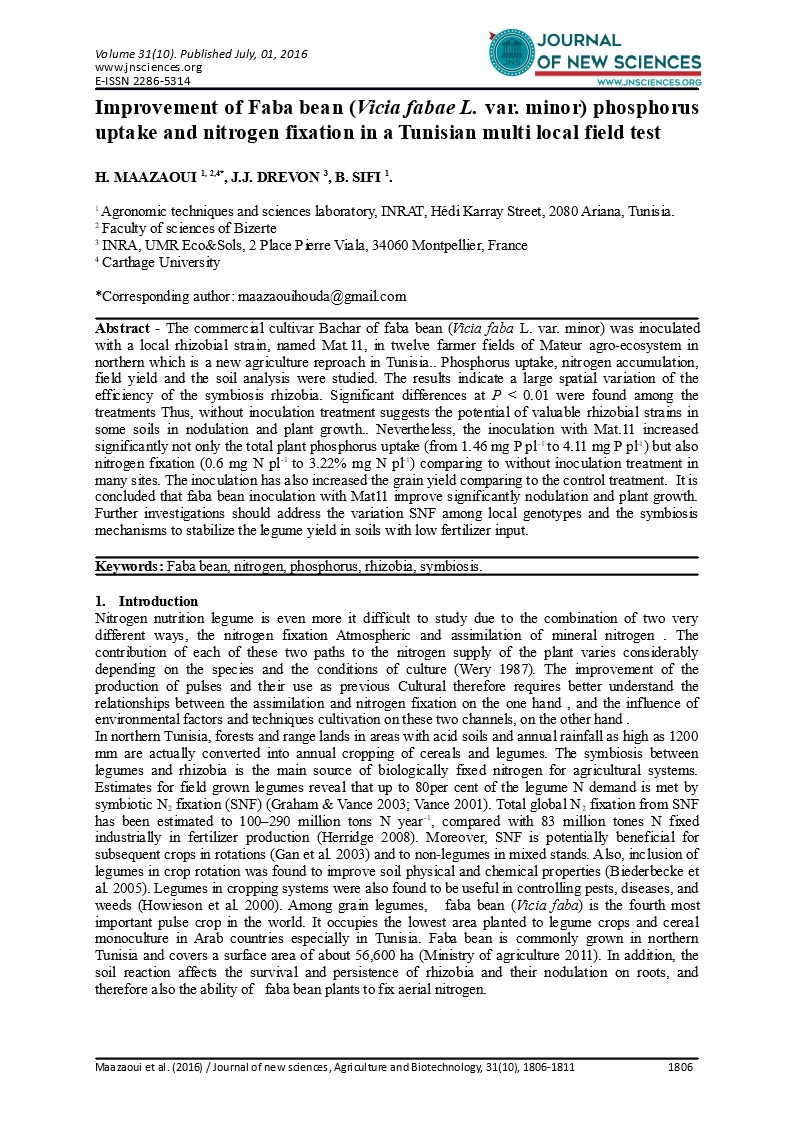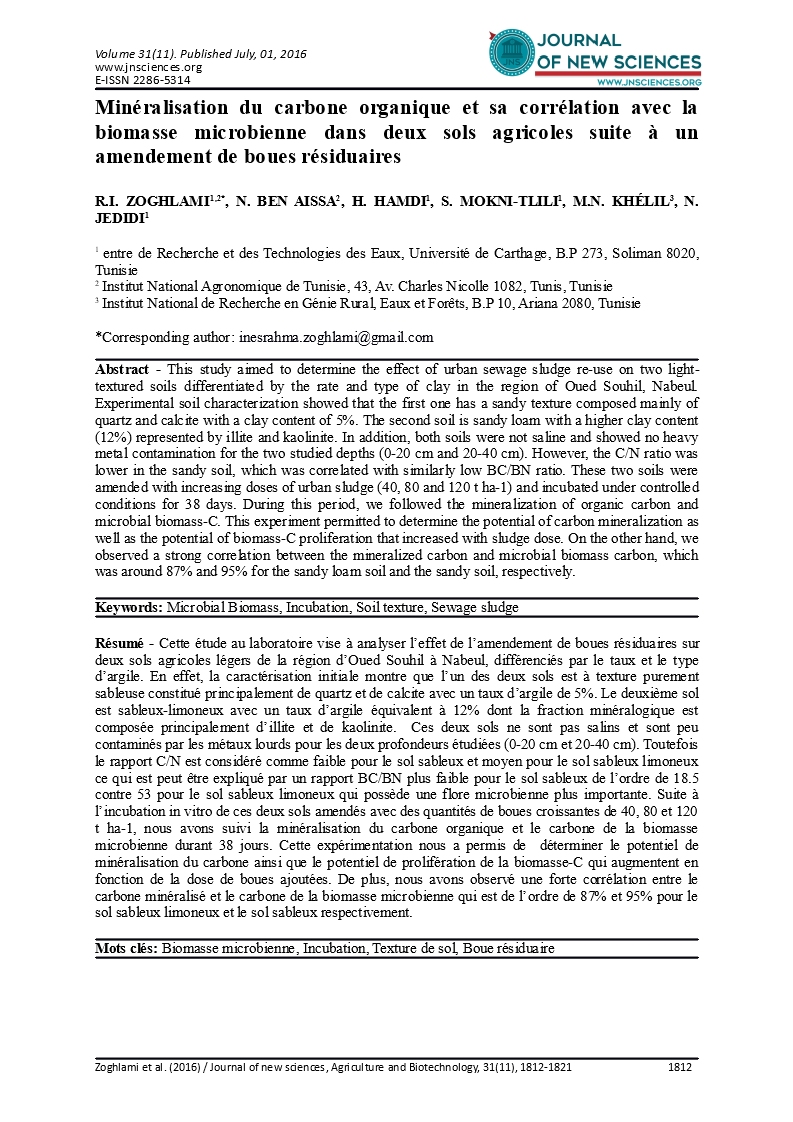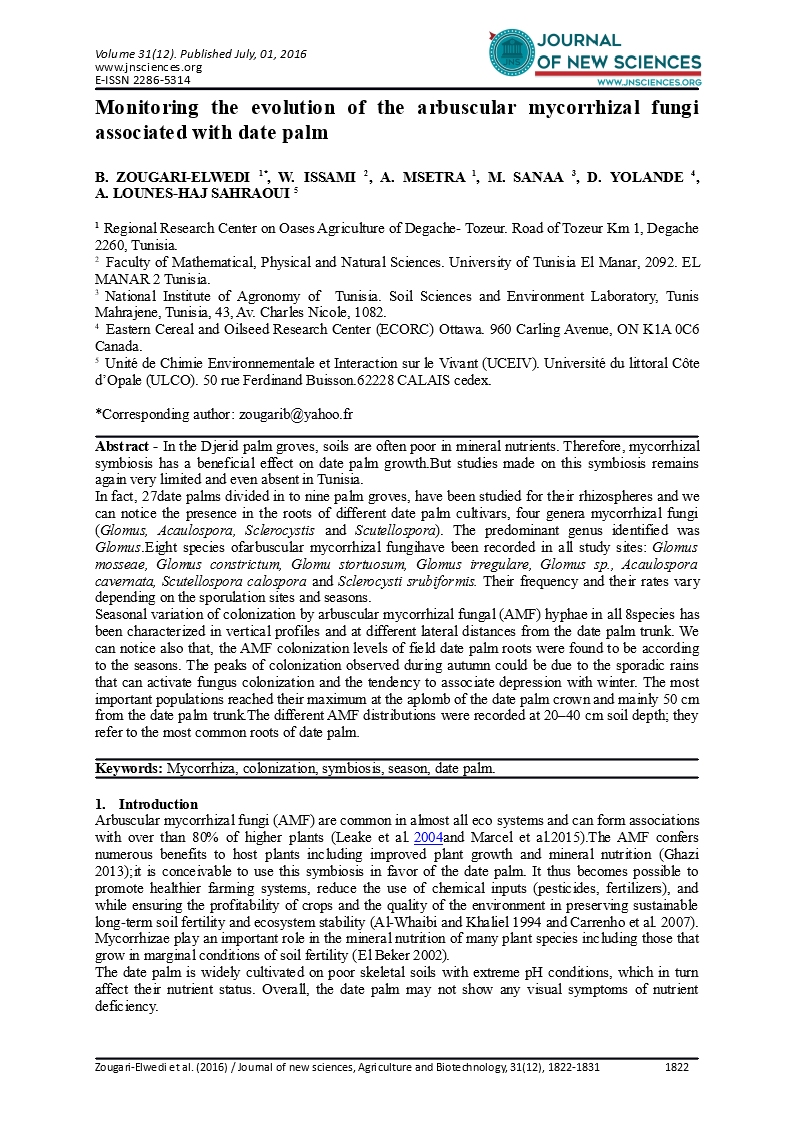- Category: Volume 31
- Hits: 6540
Antioxidant and α-amylase inhibitory activities of some tunisian aromatic plants
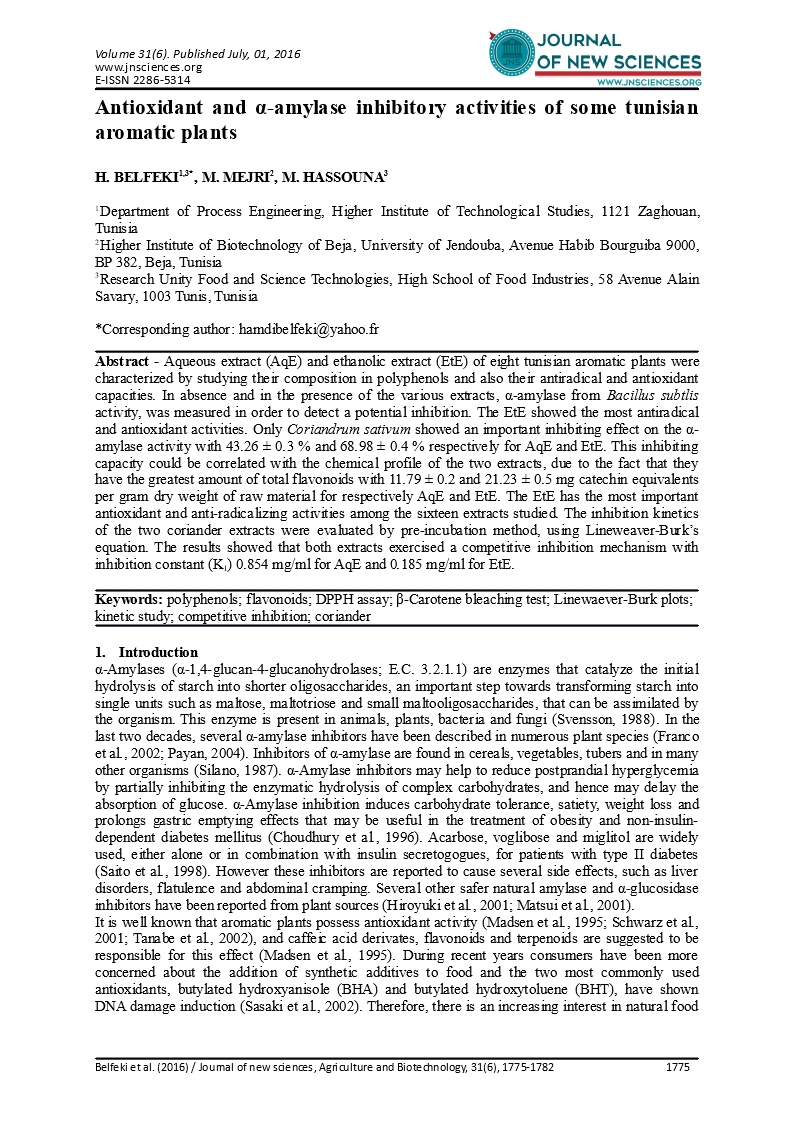
H. Belfeki1,3*
M. Mejri2
M. Hassouna3
1Department of Process Engineering, Higher Institute of Technological Studies, 1121 Zaghouan, Tunisia
2Higher Institute of Biotechnology of Beja, University of Jendouba, Avenue Habib Bourguiba 9000, BP 382, Beja, Tunisia
3Research Unity Food and Science Technologies, High School of Food Industries, 58 Avenue Alain Savary, 1003 Tunis, Tunisia
Abstract - Aqueous extract (AqE) and ethanolic extract (EtE) of eight tunisian aromatic plants were characterized by studying their composition in polyphenols and also their antiradical and antioxidant capacities. In absence and in the presence of the various extracts, α-amylase from Bacillus subtlis activity, was measured in order to detect a potential inhibition. The EtE showed the most antiradical and antioxidant activities. Only Coriandrum sativum showed an important inhibiting effect on the α-amylase activity with 43.26 ± 0.3 % and 68.98 ± 0.4 % respectively for AqE and EtE. This inhibiting capacity could be correlated with the chemical profile of the two extracts, due to the fact that they have the greatest amount of total flavonoids with 11.79 ± 0.2 and 21.23 ± 0.5 mg catechin equivalents per gram dry weight of raw material for respectively AqE and EtE. The EtE has the most important antioxidant and anti-radicalizing activities among the sixteen extracts studied. The inhibition kinetics of the two coriander extracts were evaluated by pre-incubation method, using Lineweaver-Burk’s equation. The results showed that both extracts exercised a competitive inhibition mechanism with inhibition constant (KI) 0.854 mg/ml for AqE and 0.185 mg/ml for EtE.
Keywords: polyphenols; flavonoids; DPPH assay; β-Carotene bleaching test; Linewaever-Burk plots; kinetic study; competitive inhibition; coriander

